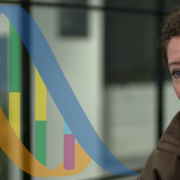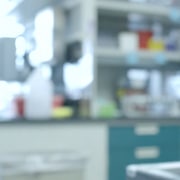Three career tips for bioinformaticians: a conversation with Fern Johnson
 Learn how to make the most of a career in this cutting-edge field
Learn how to make the most of a career in this cutting-edge field
As one of the fastest-growing areas of research and development, bioinformatics is revolutionising diagnostic testing and patient care. Here, we learn more from bioinformatician Fern Johnson, who is also an education specialist at the Genomics Training Academy (GTAC) and a clinical scientist, trainer and mentor at the North West Genomic Laboratory Hub (GLH).
Q: Could you please tell us about your professional background?
I completed my first degree in biological sciences and a Master’s in bioinformatics and systems biology at the University of Manchester. After working in IT consulting, I moved on to bioinformatics via the Scientist Training Programme (STP). Once I qualified, I stayed on as a clinical scientist in the bioinformatics team, which I have been doing for the last several years. I recently became the education specialist for bioinformatics for the GTAC. This complements my current role, where I am involved in training and mentoring. It’s great to apply the local experiences of a GLH to the development of national training resources via the GTAC, knowing that it will support other geographical areas.
Q: What advice do you have for newer professionals in your field?
- Accept that you cannot know everything – your knowledge will never stop growing! Bioinformatics is so broad and intersects with many different specialisms. You might think you need to know everything about genomics and computing, but there is so much to learn. So at the start just focus on making good notes as you go. Absorb as much as you can, and you will gain a sense of what is most important to prioritise day by day. Learn where to get information, whether internal documents or online databases – that is what matters. Don’t be daunted by the amount of information available; take it a step at a time.
- Think outside of your specialism. Bioinformatics can feel a little removed from the other disciplines, whether by physical location or the type of work that keeps the service running. Get involved with other activities where you work, work together with people on projects and attend or volunteer for seminars. And keep the patient perspective in mind; shadow genomics counselling clinics, for example. Get a bigger–picture view of what is happening.
- Keep talking about bioinformatics. It is quite a new profession and is still relatively small, even with all the advances it is making. Take opportunities to raise the profile of bioinformatics. Make sure people in other specialisms know what we are doing. We may be able to help each other in ways we had not thought of yet. People may have a glitch in their processes that bioinformaticians could support, gaps we can fill.
Q: What has been a highlight with the GTAC so far, and what do you look forward to in the future?
I am still quite new, but I enjoyed our recent in-person day where I got to meet the team and also demo the VR (virtual reality) technology that will be used for some of the training that is currently being developed. I could only envision it until then, so using it in person was fascinating. I look forward to seeing how VR and the other GTAC resources get developed and implemented.
- What is the Genomics Training Academy? Learn more about the GTAC here









